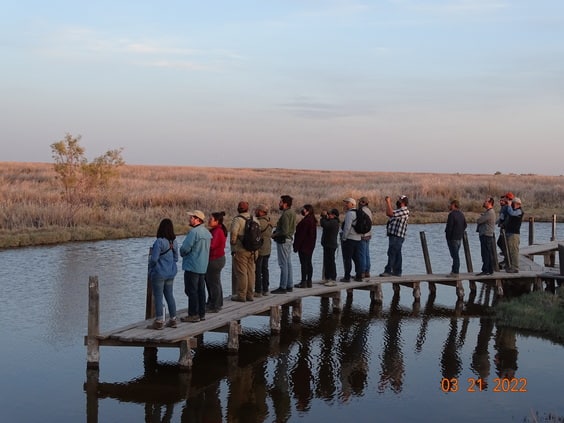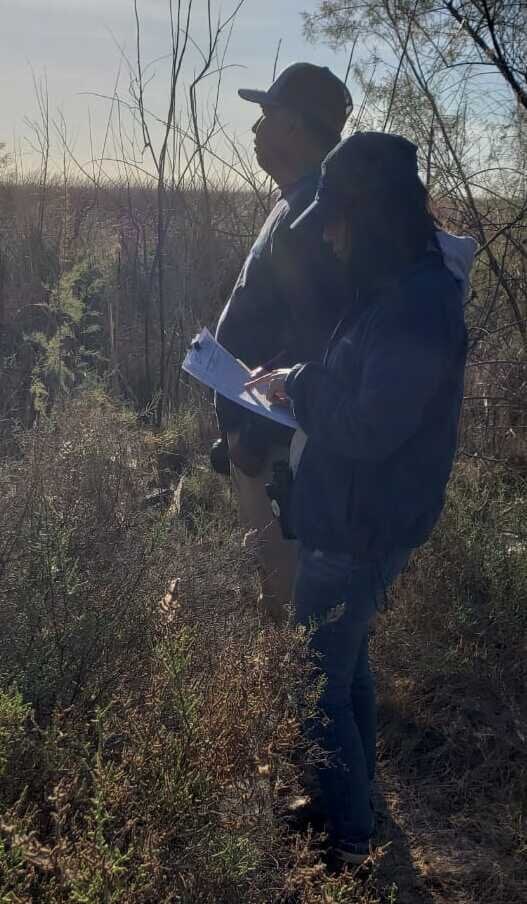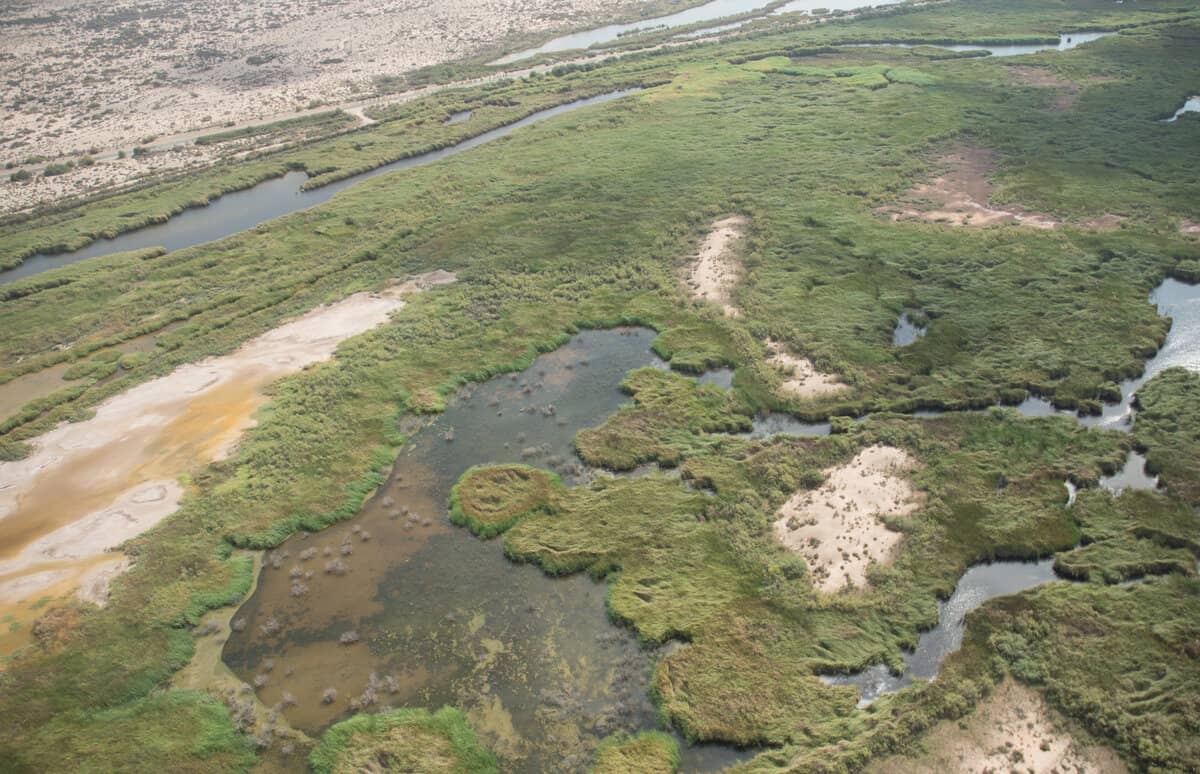By Stefanny Villagomez-Palma1, Osvel Hinojosa-Huerta1,2, Alejandra Calvo1, Eduardo Soto1
Pronatura Noroeste1 & Cornell Lab of Ornithology2
Marsh birds strongly depend upon the emergent vegetation of freshwater, brackish, and coastal marshes, where they build their nests. Before the construction of dams and diversions in the Colorado River Basin, the Colorado River Delta in Mexico supported large populations of several species of marsh birds. Reductions of instream flows, land conversion to agriculture, and dredging projects along the river caused a massive reduction and degradation of the Colorado River delta ecosystem in Mexico, with an estimated loss of 80% of the wetland area. This has caused major impacts on the breeding habitat of marsh birds in the region and their populations have declined in western North America and the Sonoran Desert ecoregion, where there are species of conservation concern, like the Yuma Ridgway’s Rail (Rallus obsoletus yumanensis).
The Yuma Ridgway’s Rail (yRIRA) is protected as Endangered in the U.S., is a species of concern in the Upper Gulf of California and Colorado River Delta Biosphere Reserve and is endemic to freshwater and brackish marshes of the Lower Colorado River. Within the Colorado River Delta, Ciénega de Santa Clara has been identified as one of the most important wetlands for marsh birds in the Colorado river basin and northwestern Mexico, covering about 5800 ha of emergent vegetation and supporting about 75% of the total population of yRIRA.

The Ciénega is maintained mostly by agricultural drainage from the Welton and Mohawk Valleys in Arizona that flows into Mexico through a network of channels and reaches this region as a byproduct of complex binational agreements. However, this source of water is not permanently secured, and a partial or complete diversion of this water source can cause the disappearance of the Ciénega and the loss of thousands of hectares of critical habitat for marsh birds and hundreds of other bird species and wildlife in general.
In the last 20 years, the Ciénega has been subject to fluctuations in flows, sedimentation, dredging, fire, senescence and rejuvenation of cattail, an earthquake, and an increased influence of tidal water. These events have been related to changes in the habitats of the Ciénega de Santa Clara, with effects on the marsh bird populations in this wetland.
That is why Pronatura Noroeste, in collaboration with partners in the Raise the River coalition, has been working on a long-term monitoring program and a binational restoration initiative in the Colorado River Delta since 1999, implementing conservation actions, including the establishment of conservation easements, and participating in binational conversation to maintain the water flows into the Ciénega. The aim of this program is to assess the status and detect changes on population trends of secretive marsh birds in the Colorado River Delta, with particular emphasis on the Ciénega de Santa Clara, focusing on hydrological and habitat dynamics in this wetland, to help guide restoration actions and the decisions on binational policy for the allocation of environmental flows. At the same time, we have been working to expand the network in northwest Mexico to protect this vulnerable group of birds.

We conducted call-response surveys to monitor secretive marsh birds in the wetlands of the Colorado River Delta during the breeding season, following the Standardized Protocols to Monitor Marsh Birds in North America. The survey effort includes 130 survey points grouped in 26 randomly located transects in an area of 5,800 ha in the marsh portion of the Ciénega de Santa Clara, as well as an additional 278 survey points to cover other areas in the delta, both in Sonora and Baja California.
Through the monitoring program we have seen that the population of the yRIRA in the Ciénega has remained stable over the last 20 years, with estimated abundances between 2,000 and 8,000 individuals. We have been also able to identify factors that influence the trend, abundance, distribution, and survival of these rails and this has allowed us to develop strategies to help maintain and improve their habitat. More recently, the relationships between habitat elements such as fluctuations in water level, anthropogenic processes such as dredging for channel maintenance, vegetation composition, algal blooms, and dynamic conditions, including fires, and high and low temperatures in the region have begun to be explored in more detail, to achieve a better understanding of the dynamics of the ecosystem and detect the key factors and necessary habitat requirements for the Yuma Ridgway’s Rail.
Please visit our website to learn more about marsh birds in Mexico and how to participate in the Northwest Mexico Marsh Birds Working Group.

